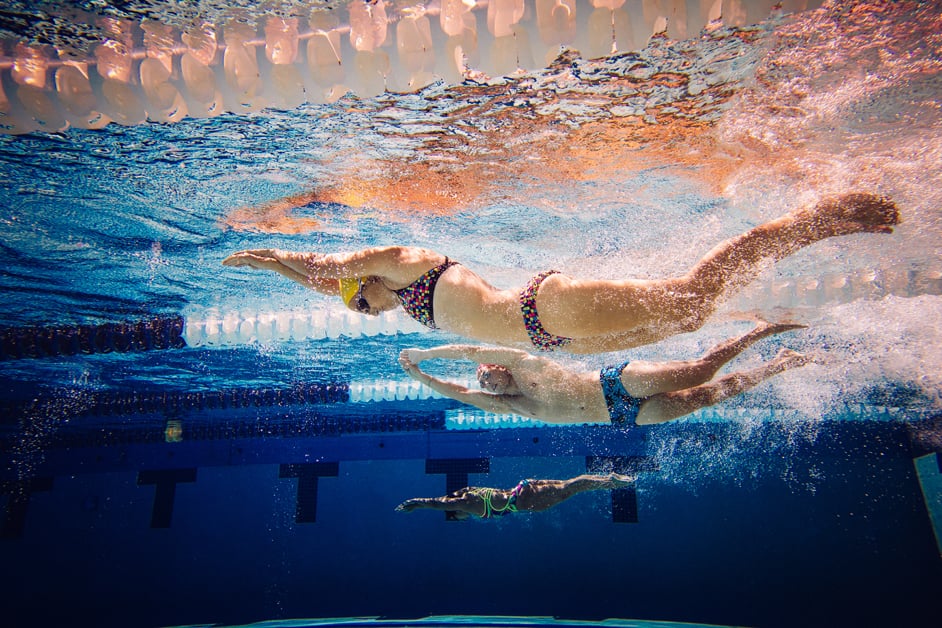Introduction
Knee pain is often an issue for many people. It stops them from enjoying their daily life! Fortunately, there are different treatments that can reduce or even take away the pain. Low-impact sports are one option to try. They can help you be more flexible and active in the area with pain.
In this article, let’s look at how to include low-impact sports in your treatment plan and the advantages of doing so.
Understanding Knee Pain
Knee pain can be caused by aging, arthritis, tendonitis, and even fractures. To alleviate it, rest and anti-inflammatories are usually enough. However, serious cases may require physical therapy or surgery.
Identifying the type of pain is important: acute or chronic. Acute pain is caused by a single minor event and resolves quickly. Chronic pain lasts longer and is due to overuse.
Imaging tests (e.g. X-rays or MRI scans) are used to diagnose conditions that lead to knee pain. Treatment plans vary depending on the individual condition. These could include physical therapy, medications, or injections.
Incorporating low-impact sports into daily routine can help manage symptoms. This allows you to stay active and healthy while reducing additional stress on your knees.
Benefits of Low-Impact Sports
Low-impact sports are a great choice for folks with chronic knee pain. Not only do they help keep your heart healthy, but they can also help lessen the pain and increase mobility.
Some examples of low-impact activities include swimming, water aerobics, walking, and biking. These put less tension on our joints than higher-impact ones like running or strength training. This is good for those with arthritis and other joint pain issues since we move less vigorously in the water than on land. Plus, low-intensity sports make everyday tasks easier as they build muscles and increase stamina without causing more pain or damage to the knees.
Additionally, the rhythmic movements of swimming and cycling can be calming and create endorphins to fight anxiety and depression, as well as reduce flare-ups. However, you should always speak to your doctor before starting any exercise program. Low-impact exercises can make a world of difference when it comes to taking care of our bodies.
Types of Low-Impact Sports
Need an alternative to combat knee pain? Low-impact sports are mild on the body and easy to tailor to your needs. Plus, they provide great physical health benefits.
This section will discuss the different types of low-impact sports that can be used in treatment. Get ready to find a low-impact sport that works for you!
Swimming
Swimming is a perfect sport for those with knee pain. It gives you the same aerobic exercise as running, but water supports your weight, reducing pressure on the joints. This makes it easier on your body and helps you stay fit and toned.
Swimming has advantages over other activities. You use more muscles at once and it takes less time. Plus, swimmers have fewer injuries than runners or players of high-impact sports.
For knee pain relief, it’s important to use proper technique. Incorrect form can make existing conditions worse. Also, if you feel any new discomfort, stop and talk to your medical provider before trying again.
Yoga
Yoga is a low-impact sport. It involves stretching and putting the body in different positions. It helps with physical fitness and mental wellbeing. Yoga combines breathing exercises and postures. This increases physical strength, flexibility, and balance.
Doing yoga has many benefits. These include:
- Relaxation
- Mental focus
- Core strength
- Improved range of motion in joints
- Better posture
- Improved circulation
It can be modified for any fitness level or age. The poses can be adjusted for intensity or for flowing into each other, while keeping proper alignment.
Cycling
Cycling is an awesome way to get in shape and it’s gentle on your joints. You can do it indoors or outside. For those with knee or joint pain, stationary cycling is a great option. Gyms usually have stationary bikes, which you can use with supervision. Recumbent bikes are also kinder to your knees and hips.
If you want to cycle outdoors, shorter rides on flat terrain are best. Paved trails are more comfortable to ride on than dirt and gravel. Also, make sure your seat is the right height – your legs should fully extend when you pedal without straining your knees, feet, or ankles. To make it even more comfortable, add supportive gear like an orthopedic wedge saddle or gel bike saddle cover.
Finally, pay attention to how you feel after each ride and adjust your exercise accordingly.
Pilates
Pilates is all about strengthening the muscles that support and stabilize your spine, pelvic girdle, knees, ankles and feet. Unlike other strength activities, it combines bodyweight exercises and coordinated effort from both sides of your body. This helps to keep you balanced. The focus on slow, methodical movements creates a deeper connection between your mind and body. This helps you focus on proper alignment during each exercise.
Increased flexibility and increased blood flow enhances joint health and can be useful in managing knee pain. One of the great things about Pilates is that you can adjust it to your own level. So, no matter your fitness level, there is an option for you!
Preparing for Low-Impact Sports
Managing knee pain? Doctors suggest low-impact sports like swimming, cycling and walking. These activities are gentler on joints and muscles, reducing further injury risks or worsening existing conditions.
Thinking of starting a low-impact sport? Here’s a few things to remember. This section covers preparation and how to get started safely:
Consult with a Physician
If you have knee pain, talk to a doctor. They can do an exam and more tests to figure out the cause. The doctor might suggest surgery or wearing a brace for some time. Only after the doctor approves can you start an exercise plan.
The doctor may give you exercises and stretching to help your range of motion. They may also suggest medicines if the pain is from inflammation. It’s important to stay in touch with the doctor to get the best combination of treatments for your knee pain.
Strengthen Supporting Muscles
Strengthening the muscles that support the knee is essential for low-impact exercises for those with knee pain. This can include the quadriceps, hamstrings, calf muscles, and abductors. To achieve this, stretching and resistance training must be combined. Strengthening these key muscles can help support the knees, reduce pain, and improve function. It can also help to prevent injury or damage due to physical activity.
Interval training, which is switching moderate to high intensity aerobic activities with strength training, is great for low-impact sports that provide knee pain relief. Before trying any form of exercise, check your physician’s recommendations. Some stretches or exercises could worsen knee problems or cause harm if not done correctly. If you are not sure what exercises are suitable for you, consult a medical professional or physical therapist. This applies to any activity, including low-impact sports.
Wear Proper Gear
For proper and safe knee pain treatment, the right gear matters. Wear well-constructed, comfy and supportive shoes for your activity. Shock absorbing clothing can improve cushioning while supporting body alignment. Braces and sleeves can help reduce pain while running or swimming. Stretches before physical activity can reduce the risk of injury. Don’t forget to stay hydrated and drink plenty of fluids before exercise. This helps regulate body temperature.
Incorporating Low-Impact Sports into Your Treatment
Low-impact sports can be a real benefit for those with knee pain and other related issues. Such activities can help reduce pain, increase mobility, and build the muscles around the knee joint. Additionally, switching to low-impact workouts may lower the risk of any further injury.
Let’s explore how it can assist with knee pain management:
Start Slow
When recovering, it’s essential to start with low-impact activities and increase intensity and duration gradually. Low-impact sports should be fun and improve life quality, not a challenge. They should be part of an overall plan tailored to long and short term goals.
When used properly, the results go beyond the plan. Managing discomfort is key. Potential activities might include:
- Walking
- Swimming
- Cycling
- Yoga
- Gentle stretching
Discuss with the healthcare provider to choose the right one according to abilities and limitations.
Listen to Your Body
It’s key to listen to your body and be aware of what could cause a setback. Low-impact sports, such as walking and cycling, are great for people recovering from injury or illness. Before starting any low-impact regimen, talk to your doctor first.
Low-impact sports offer exercise without stressing the body. To get the most out of them, use correct form and technique. If using gym equipment, set the resistance low and gradually increase it. Don’t overexert yourself; if something doesn’t feel right, stop and consult with a doctor or physical therapist before continuing.
Additionally, light stretching can help with flexibility and reduce soreness. Yoga is great for low-impact exercises, as it involves coordinated breathing with gentle movements. Cool down afterwards with simple stretches and deep breathing to allow your mind and body to recover properly.
Take Regular Breaks
When enduring knee pain, it’s important to take breaks while doing physical activities and sports. Replenishing your body’s energy supply is necessary for optimal performance, health, and wellness. During exercise, breathing deep or stretching can be helpful to relax your mind and body.
Be aware of your body’s signals when exercising. If you feel any pain, stop and assess the situation. Take rest between exercises and don’t run through pain or strain. Note any swelling which may be an infection or more damage, then see a doctor.
Listen to your body when doing low-impact sports for knee pain treatment. Take regular breaks so you can be conscious of your knee’s feeling and evade any additional harm to the joint:
- Take regular breaks.
- Be aware of your body’s signals.
- Don’t run through pain or strain.
- Note any swelling and see a doctor.
- Breathe deep or stretch.
Conclusion
Therefore, low-impact sports are a great way to move and work out while treating knee pain. They are good for reducing the pain and increasing mobility. Plus they have mental and emotional advantages. The main objective of dealing with knee pain is to lead a long and healthy life – low-impact sports can help with this!
Benefits of Low-Impact Sports
Low-impact sports are perfect for managing knee pain. Opposed to higher-impact sports like running, jumping, and team sports, these activities don’t put an extreme strain on your body. Low-impact activities help your physical health, too. They boost your heart rate and build muscle strength.
Including low-impact sports in your knee pain treatment comes with lots of benefits. It reduces pain by strengthening the muscles and taking pressure away from the joint. Low-impact activities also increase blood flow and oxygen to the affected areas, aiding in the healing of ligaments and cartilage. Plus, they help increase joint flexibility while boosting mental wellbeing through endorphin release.
Examples of low-impact activities to treat knee pain include:
- Walking and jogging on flat surfaces
- Using an elliptical or stationary bike
- Leisure swimming
- Light weight lifting
- Yoga
- Pilates
- Stretching exercises
But, remember to start slow and listen to your body. If something causes more pain or discomfort, stop to prevent further damage.
Incorporating Low-Impact Sports into Your Treatment Plan
Low-impact sports are great for managing chronic knee pain. They decrease inflammation, improve mobility, range of motion and strength. Doing regular low-impact sports can help reduce pain and keep the knee joint healthy.
Before beginning any exercise plan, talk to your doctor or physical therapist. When planning a program with low-impact sports, consider these things:
- Choose activities that don’t involve jumping or sudden changes in direction or speed. Examples: walking or stationary cycling.
- Start slow. Begin with 10 minutes per day. Increase as your fitness level allows.
- Don’t push too hard. Rest when needed.
- Use proper form. Incorrect technique can cause more injury.
- Stretch before and after exercising. This helps with soreness and flexibility.
By following these tips, you can use low-impact sports like walking, swimming and cycling to treat chronic knee pain. These activities keep the muscles strong and flexible. They also provide an interesting way to stay active if traditional high-intensity workouts are too painful or not allowed by your doctor.
Frequently Asked Questions
Q1: What types of low-impact sports can I do to help my knee pain?
A1: Low-impact sports that can help alleviate knee pain include swimming, cycling, yoga, tai chi, elliptical machines, and water aerobics. All of these activities can help strengthen the muscles around your knee and improve flexibility.
Q2: How often should I do low-impact sports?
A2: It is recommended to do low-impact sports at least three times a week, for 20-30 minutes per session. Make sure to take breaks between activities and to not push yourself too hard.
Q3: Are there any other tips for incorporating low-impact sports into my knee pain treatment?
A3: Yes, make sure to warm-up and stretch before any activity and to listen to your body. If your knee begins to hurt, take a break and rest. Additionally, talk to your doctor or physical therapist to determine which activities are best for you.





